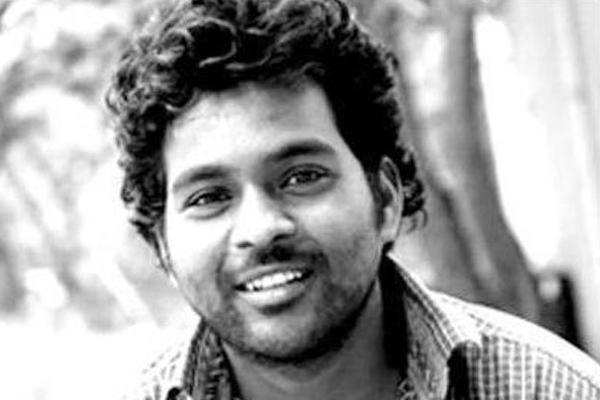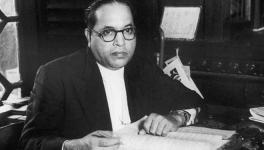REPLUG: Rohith Vemula, Your Sacrifice was Not in Vain

Someone who fights his entire life against injustice and ultimately sacrifices his life deserves to be called a martyr, even if martyrdom is formally reserved for those who battle on the borders. Today, many such thoughts come to mind on the sixth anniversary of the death of Rohith Vemula.
Academics and society
Rohith Vemula paid the ultimate sacrifice, of his life, to make academia introspect. His self-abnegation has become the most well-known instance of the widespread atrocities against the Dalits that prevail in academic spaces. He might have thought that the system is so callous that it will take not less than a living sacrifice to jolt it. Unlike many other incidents in academic institutions before and after him, the system got jolted by Rohith’s death, but it was obviously not shaken. That the system continued its atrocious practices is illustrated by the cases of Deepa Mohanan and Vipin P. Veetil. Scholarships continue to elude Scheduled Caste/Scheduled Tribe students. SC/ST teaching positions continue to remain vacant in academic institutions.
So, the foremost lesson we can draw from Rohith Vemula’s sacrifice is that it is critical to fight the subtle atrocities that prevail in academic institutions in the name of excellence and academic autonomy. What is the use of the academic excellence and autonomy that takes so many students’ lives? The minority of Dalit scholars cannot in any way obstruct the so-called excellence of the majority in educational institutions. The real story is not the question of pursuing excellence but the age-old quest to suppress the Dalits. Some of the “excellence” in academia is about using every possible way to prevent the Dalits from excelling.
Science Technology Engineering and Mathematics (STEM) academia in India avoids the caste question using the tacit excuse that STEM has nothing to do with caste. For them, something like a “sociology of science” does not exist. On the other hand, cleverly, even the social science academia either avoid or distort the caste question. They sweep the caste question under a cloak of what can, at best, be called “vintage academic fashion”. They do not transpose critical race theory to the Indian context, which would translate into BR Ambedkar’s statement, “Turn any direction you like, caste is the monster that crosses your path.”
While the world changes rapidly, academia in India is still stuck with vintage academic fashion. Many students and faculty in academics mistake this fashion for substance and create a vast gulf between the academic world and the world outside.
The word “Ambedkarite” became popular after Rohith Vemula’s sacrifice. Currently, vested interests are trying to turn this into a fashion, reducing its substance. For example, it is now acceptable to talk about discrimination against Dalit students but not Dalit teachers. It is fashionable to talk about the discrimination by “the system” but not by peers. It is fashionable to create institutions, chairs and journals in the name of Ambedkar, but the space is filled with non-Dalits. This sort of Ambedkarism is basically a fashion without any substance. In this context, it is helpful to teach and internalise notions like “360-degree discrimination” and “discrimination audits”. Unless the academic sphere practices holistic thinking rather than fashionable thinking, it will not impact the wider society but remain an ivory tower for a privileged few. While living in an ivory tower is comfortable, such a life is always vulnerable to a rebellion by the public.
Most importantly, a nation cannot make itself better by hiding its problems but only by recognising them upfront. Therefore, to recognise caste in academia is to identify the problem forthrightly. A caste census will be the ultimate acknowledgement of India's problems!
The art and science of protest
Not for nothing did the Buddha prescribe a middle path that avoids the extremes. The Indian Constitution, which is a liberal democratic one, is neither revolutionary nor conservative but follows the middle path. If we observe Ambedkar's fighting strategy, we find that he followed the middle way, too, the route of avoiding extremes. It is said that Ambedkar practised pragmatism, which is not opportunism. (Roscoe Pound, applying pragmatism to law, conceived the law as a conflict resolution mechanism at a minimal cost.)
Ambedkar gave a lot of weight to the law in a protest project; it must adopt a pragmatic approach. It must be both art and science. A strategy for a protest that does not make any calculation of the costs involved is not a good strategy. A judicious mix of protests in the street and the courts seem to be a pragmatic strategy.
This leads us to the next point, whether a so-called Rohith Act is possible. After Rohith Vemula died, many proposed a law in his name to counter atrocities in academic institutions. While nobody defined the contours of such an act, the crux of the matter is indirect discrimination. Thankfully, what was recognised in the West in 1973 was acknowledged in India in 2021. Last year, the Supreme Court defined indirect discrimination in Lt. Col. Nitisha vs Union of India. So, Rohith’s sacrifice has not gone all in vain. Somewhere, the social stir that has taken place after he died has contributed to change.
‘Rohith Guidelines’ can be a fitting tribute
Unlike American laws, laws in India are not named after individuals. The Vishaka Guidelines are a rare instance when a Supreme Court-made law was named after an individual. These guidelines are equally applicable to all organisations, including private ones. The society also accepted these guidelines, while the State transformed it into a Parliament-enacted law, the Prevention of Sexual Harassment at the Workplace Act, 2013.
Even more radical than this, society accepted the Me Too movement. While civil society has no problem acknowledging gender violence, it is yet to show the same generosity to acknowledging caste violence. Could there be Rohith Guidelines in the manner of the Vishaka guidelines? Would civil society accept a “Caste Too” movement?
The author is Professor and Dean in the School of Education, Tata Institute of Social Sciences. The views are personal.
Get the latest reports & analysis with people's perspective on Protests, movements & deep analytical videos, discussions of the current affairs in your Telegram app. Subscribe to NewsClick's Telegram channel & get Real-Time updates on stories, as they get published on our website.
























